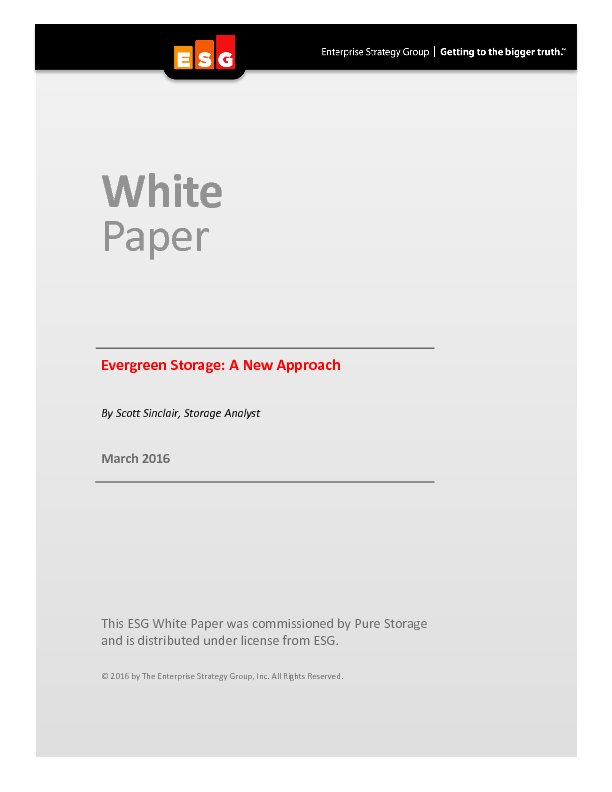Evergreen Storage: A New Approach
For decades, the limitations of spinning disks have held back data center efficiency and constricted architecture decision-making. These performance bottlenecks have impacted not only storage infrastructure decisions, but also decisions involving application deployment, server, and networking configurations, and power and cooling. To meet the performance requirements of business-critical workloads, IT administrators often employed what could be considered today as unnatural acts to improve storage performance. For example, disk striping and the various RAID configurations, such as RAID 10 and 50, that leverage disk striping were designed to attempt to aggregate multiple spinning drives to increase the collective performance. It was also common for organizations to deploy far more capacity than was necessary or to significantly reduce the accessible capacity of a drive via short stroking all to increase performance. These techniques were not only common, but also best practices recommended by application vendors. Thankfully, those days are fading into the sunset as the dawn of a new era of storage rises with the emergence of solid-state storage solutions, such as the all-flash array.
Even as more organizations adopt solid-state storage and integrate it into their environments, however, the remnants of old storage architectural design paradigms exist. One example, the scale-out storage architecture, enables a storage pool to scale performance and capacity simultaneously by adding incremental storage nodes that offer a combination of processing, memory, and disk capacity. This model provided simplicity to spinning disk environments, where incremental capacity was often required to increase performance. But in the era of solid-state storage, this model often introduces inefficiencies. Additionally, though not as antiquated as short stroking, many of the benefits of scale-out storage designs offered to spinning disk media can be achieved by leveraging alternative means.
Download the free Whitepaper from Pure Storage Ltd here:

